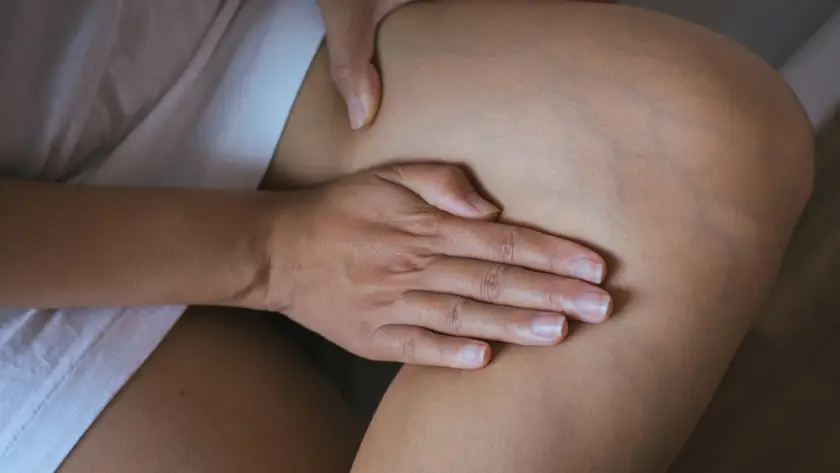How to Get Rid of Varicose Veins
Varicose veins are more than a cosmetic issue. For many people, varicose veins are the source of pain, skin damage, and serious health complications.
Whether you are dealing with painful veins, or just want to prevent these issues before they occur, you’ve come to the right place. Here’s some info on what causes varicose veins and how to avoid them.
Insights from Activa Clinics on Effective Methods for Treating and Preventing Varicose Veins
What Causes Varicose Veins?
Varicose veins are veins that have become enlarged and twisted. Any vein near the skin can become varicosed, but it most often affects leg veins. One reason for that is the veins in your lower body have to fight gravity to make blood flow back up to your heart.
Your circulatory system has many one-way valves that keep blood flowing in the proper direction. When there’s an issue with those valves, it can allow blood to flow the wrong way down your leg veins. The blood then begins pooling in the veins causing enlargement and swelling.
According to the Canadian Society for Vascular Surgery, 20% of adults have varicose veins. The issue often begins spontaneously, but there are a number of risk factors that determine how likely it is to happen to you. They include:
- Ageing: Normal wear and tear increases your risk as you get older
- Gender: Women are at a higher risk than men due to hormonal differences
- Genetics: A family history of varicose veins increases your risk
- Being overweight: Increases your risk by adding pressure on your veins
- Sitting or standing for long periods: Increases chances by reducing blood flow
- Pregnancy: Increases your risk through hormones and increased volume of blood
Complications
When varicose veins are allowed to progress unchecked, they can become much worse. In some cases, they can lead to serious issues. The possible complications include:
Chronic pain
Varicose veins can cause chronic pain and discomfort, and it can range from mild to severe. The pain is sometimes described as localized pain, an ache, a feeling of heaviness, itchiness, or a burning sensation.
Bleeding
Varicose veins near the surface of the skin will sometimes burst and bleed. However, it usually only causes minor bleeding.
Blood clots
Typically, it’s only the veins near the surface of the skin that become varicosed. That’s why they can lead to superficial blood clots (also known as superficial thrombophlebitis). While they’re not as dangerous as blood clots that form in deeper veins, they can still cause leg swelling, pain, redness, and tenderness
In severe cases, clots can form in deeper veins—also known as deep vein thrombosis (DVT). That type of clot can be life-threatening as there’s a chance it could travel from your leg to your lungs and cause a pulmonary embolism.
Ulcers
Varicose veins can lead to ulcers on the lower leg. This is because the blood that pools in the veins will gradually build pressure on the skin and create an open sore. These wounds most often appear around the ankle or on the side of the lower leg. They are slow to heal and have a tendency to return.
If you think you have an ulcer, you should see a doctor. Without proper treatment, these ulcers can grow larger and lead to other issues in your legs.
Prevention and Treatment
Here are a few tips to help you avoid some of the problems that varicose veins can bring. These methods can work for both preventing and helping to heal varicose veins.
Compression socks and stockings
Compression socks and stockings are considered one of the best initial treatments for varicose veins. They provide pressure that improves the flow of blood back up to your heart, reduces swelling, relieves symptoms, and reduces the risk for complications. You can also get compression socks and stockings custom made to ensure they provide the perfect amount of pressure in the specific areas that it’s needed.
Exercise
Getting more exercise can help in a number of ways:
- Aerobic exercise will improve your cardiovascular health, improving blood flow.
- Exercises that strengthen your leg muscles will make those muscles more efficient at moving blood.
- Regular exercise will help you achieve a healthier weight which takes the pressure off your veins and further reduces your risk.
Simple tips
Here are some final tips that are easy to practice. Although they are simple, they help you reduce your risks for varicose veins.
- Avoid sitting or standing still for long periods. Try to break up those periods by taking short breaks to change position.
- Elevate your legs when possible to improve blood flow.
- Avoid high heels as they limit the action of a leg muscle that pumps blood back towards the heart.
